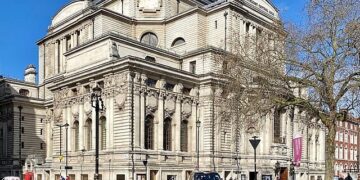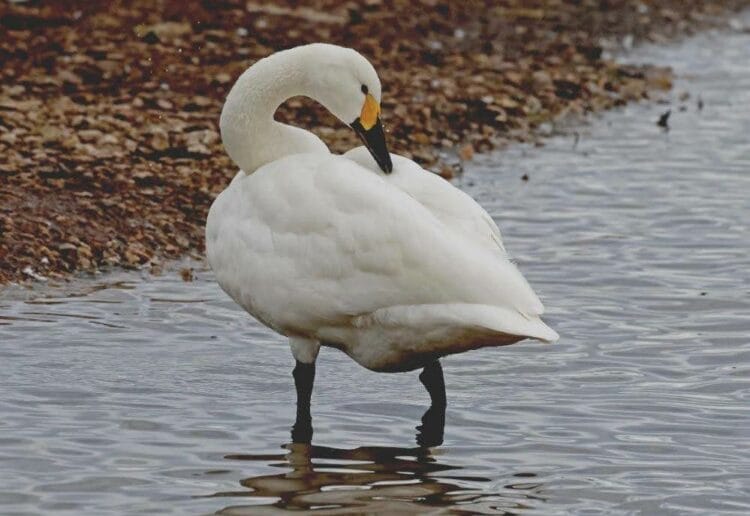Our November indoor meeting was a talk by Andy Tucker, Managing Director of the wildlife travel company Naturetrek, a company he has worked for since 1998.
After days of wet and windy weather, we were delighted to be whisked away to the blue skies and colourful birds of Ecuador and Colombia, both countries which Andy knows very well.
His love affair with South America started with a year in Peru in 1996, cutting his teeth as a wildlife guide and learning Spanish.
As a relatively small country Ecuador is ideal for ecotourism, making it possible to explore a range of different habitats in a fairly short visit.
There are superb wildlife lodges which have grown up on low-grade and unprofitable agricultural land and the money brought in by visitors is of enormous benefit to the local community.
This has preserved pristine cloud forest from the ravages of deforestation for palm oil cultivation which has devastated areas in the south of the country.
In addition to cloud forest, areas to explore include the Napo river, a tributary of the Amazon, where a huge canopy walkway has been built, 50 metres above the forest floor.
The diversity of birdlife in the area is astonishing and it is not unusual to see 100 species in one morning. There are brightly coloured tanagers, an amazing array of hummingbirds as well as parrots, eagles, howler monkeys and tamarind monkeys.
Lodges higher up in the Andes reveal yet another suite of birds, many of them being endemic to the area and up on the tree line there are hot springs.
Having been dazzled by the sheer variety of species to be seen in Ecuador, Andy took us to Colombia, a country with the biggest diversity of bird species in the world, standing at 1,900 currently. However, given that huge tracts of forest remain unexplored, it is highly likely that the real number is much higher.
Colombia was off limits for tourism until 2010 because of the threat from drug cartels but, although some areas are still to be avoided, large parts of the country are perfectly safe and the people very welcoming.
Being four or five times bigger than Ecuador and dominated by three north-south ridges of the Andes as well as the remote Santa Marta range in the north, Colombia has a large number of endemic species and a wide range of habitats, cloud forest, high mountains, wetlands and the high Paramo grasslands.
Each suite of species can exploit a different niche.
Andy’s photographs were stunning and included one of the sword-billed hummingbird, which has the longest bill in relation to body size of any bird. This enables it to access nectar from the long Datura flower which other birds cannot reach.
For those in the audience who had been to South America the talk brought back very happy memories as well as the urge to revisit and for others Ecuador and Colombia have undoubtedly been added to the bucket list.
On Sunday, November 19, a group of us went by minibus to the Slimbridge Wildfowl and Wetland Trust centre on the River Severn.
A fantastic place at this time of year, you can enjoy the extensive wildfowl collection and/or the many wild birds that come here for the winter.
We concentrated on the wild birds and were relieved that six Bewick’s Swans had turned up on the Thursday, a week late this year. We had good views of these swans and four Whooper Swans who had turned up a few weeks before.
Over-wintering swans are arriving later and in smaller numbers because of climate change and illegal hunting on their migration routes.
Large numbers of ducks and geese were feeding in the wet fields, flocks of Wigeon and Teal with smaller numbers of Pintail and Shelduck and a small group of White-fronted Geese were a highlight. Waders included a large flock of Golden Plover and more than a thousand Black-tailed Godwits (a record count here) and good numbers of Curlew and Dunlin.
A White-rumped Sandpiper, a small American wader, had been seen on and off for a couple of weeks.
It was very difficult to find on such a large site but someone in one of the hides found it and pointed it out to us. Four Cranes along the shoreline were also very nice to see. It was a lovely day out, a bit windy but dry and we were lucky to avoid the forecasted showers.
About 50 species seen in total.
On December 12, we will hold our annual Christmas social, with members giving a series of short talks followed by festive food and drink.
On Sunday, December 17, there is a trip to Little Marlow Gravel Pit to look for wintering ducks and siskins and on Tuesday, December 19, there will be a walk on Greenham Common.
Our indoor meeting on January 9, will be a talk by David Boag on Britain’s wild coastline, followed on 13 February by a talk by Peter Holden on how birds have inspired art and culture.
Outdoor trips start on January 16, with a trip to Chimney Meadows BBOWT’s largest reserve in Oxfordshire and on January 21 there will be a morning walk at Wishmoor Bottom near Camberley.
On February 18, there will be a minibus trip to Blashford Lakes in Hampshire, followed by a visit to the Warburg reserve in the Chilterns on February 20.
All indoor meetings are held in Pangbourne Village Hall starting at 8pm. Visitors are very welcome. There is an entrance fee of £5 for non-members, juniors half price. New members are always welcome with annual membership set at a modest £15 (£10 for juniors).
For more information visit group.rspb.org.uk/reading























